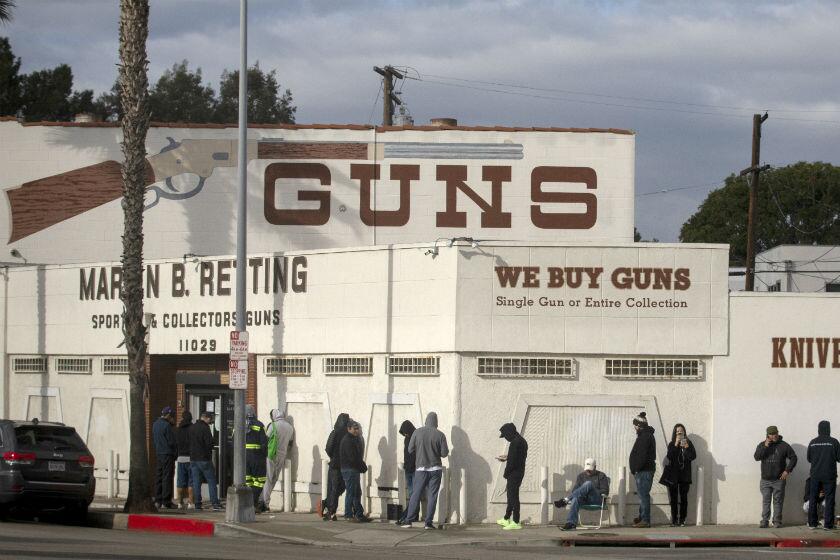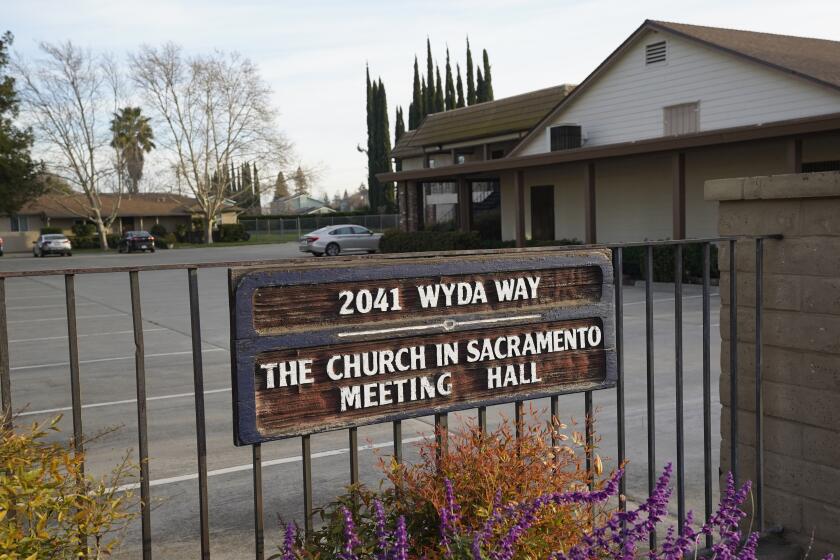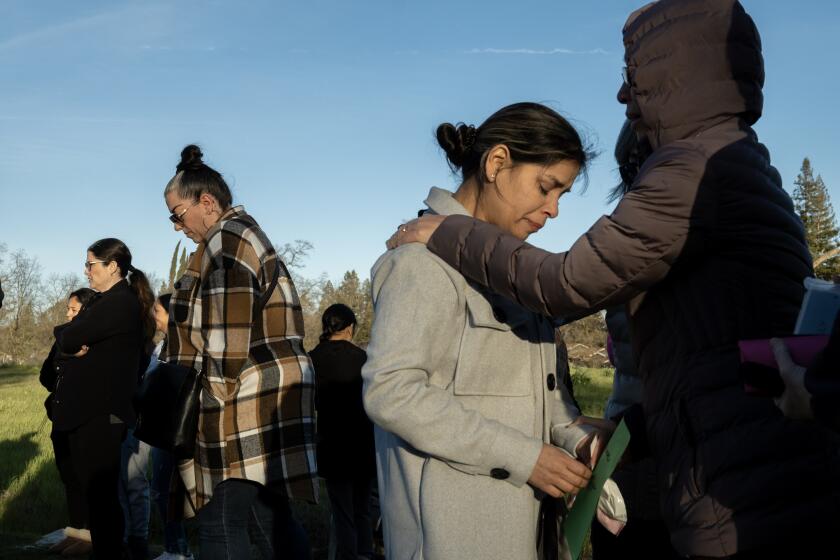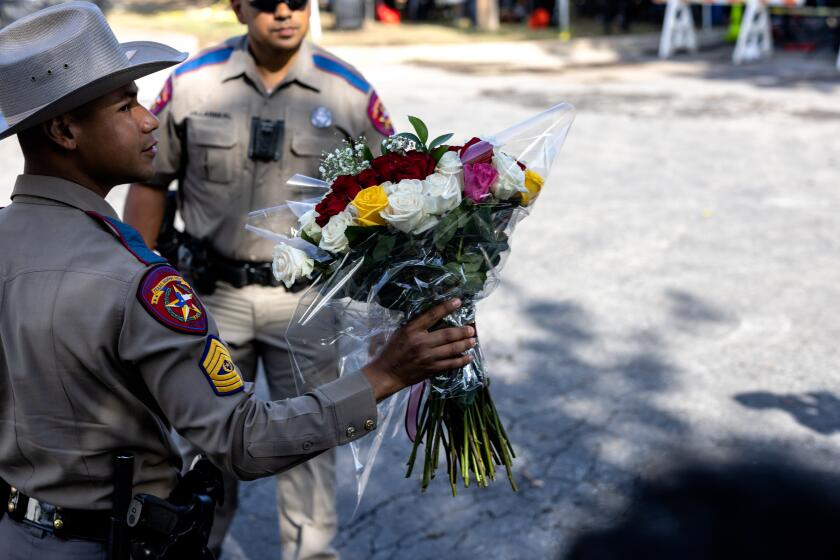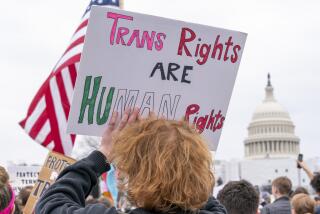Editorial: We know what will happen if the Supreme Court lets accused domestic abusers keep their guns

The U.S. Supreme Court will consider the consequences of its extraordinarily reckless opinion in the notorious Bruen gun case when it hears arguments Tuesday on whether the 2nd Amendment forbids laws that require domestic abusers to temporarily relinquish their deadly weapons.
The hearing follows the court’s announcement that it will soon also take up a federal ban on so-called bump stocks — equipment that can turn a semiautomatic rifle into a weapon that fires almost as rapidly as a machine gun.
Even a domestic violence restraining order isn’t justification to stop dangerous people from carrying guns? The bizarre 5th Circuit Court ruling and others like it will be the death of us.
It is tempting to believe that the court will recognize its overstep last year in New York State Rifle & Pistol Assn, Inc. vs. Bruen, and back up enough to find gun violence restraining orders within the ambit of the Constitution and within Americans’ power to protect themselves from escalating gun violence.
But don’t be too sure. The Bruen opinion expressed the court majority’s slavish devotion to originalism — a fundamentalist doctrine that looks to late 18th century conditions to determine the constitutionality of modern laws.
The suspect in the mass shooting in Lewiston is said to be a military reservist with a history of mental issues. He’s no more or less typical than other U.S. mass shooters.
Following the court’s originalist template, the U.S. 5th Circuit Court of Appeals earlier this year invalidated a federal statute dealing with domestic violence restraining orders because when the Bill of Rights was drafted, there were no domestic violence laws that included temporary relinquishment of guns. If the justices agree with the appeals court’s ruling, red flag laws in California and 19 other states would likely go down along with the federal law.
That would be disastrous. About a quarter of women murdered in the U.S. each year are killed by current or former partners using guns. The killers tend to give warnings in the form of threats or prior attacks, and potential victims can petition courts for emergency orders that require accused abusers to give up their guns temporarily and refrain from purchasing new ones. The Supreme Court may well snatch away that shield.
California must do more to stop dangerous people from having guns. It’s shameful that California essentially relies on an honor system asking domestic abusers to relinquish their weapons.
The case at hand deals with a Texas man named Zackey Rahimi, who assaulted his girlfriend and threatened to shoot her if she told police. Her petition to a Texas court for a domestic violence restraining order was granted, and after several incidents in which Rahimi fired guns in public, police searched his home and found numerous weapons. He was charged with violating a 1994 federal law that bars people under domestic violence restraining orders from possessing or purchasing guns.
His challenge rests in part on the argument that he wasn’t yet convicted of anything, so he lost his ability to exercise his 2nd Amendment right without due process. Yet there are many instances in which courts uphold laws or procedures temporarily suspending civil rights, for example when a person accused of a crime is jailed before arraignment or trial. Liberty is at least as fundamental a right as gun possession. Its loss, pending trial, ought to be acceptable upon a showing that there is no less restrictive way to protect the public from potential harm.
David Mora shot and killed his three daughters and a chaperone during a supervised visit last year. The children’s mother warned the courts he was dangerous, but no one listened.
The drafters of the Bill of Rights, it goes without saying, were ignorant of the 21st century United States. They knew nothing of large cities, police departments, women’s rights, semiautomatic weapons, the modern military. They wrote for a handful of states tucked between the Atlantic and the Appalachians, at a time of slavery and sharply restricted citizenship. They distrusted standing armies and saw the ability of men to grab their Brown Bess muskets and assemble as at Lexington and Concord to repel an enemy, or to answer the “hue and cry” to track down an accused felony suspect, to be as fundamental to their limited version of democracy as assembling to debate or lining up to vote.
But they knew they were framing rules for a future they could not see, so they wrote in the broadest possible terms, making clear their goal was the “security of a free state,” and leaving it to their descendants to interpret for themselves exactly what it means to infringe on the right to keep and bear arms.
Perhaps it’s the fate of the United States to watch its soul die along with the 19 students and two adults shot to death Tuesday at an elementary school in Uvalde, Texas.
The originalist approach turns the words of the 2nd Amendment into brittle things that cannot encompass the needs of present-day Americans without also endangering them in a way the authors surely did not intend. It is one thing for the people to retain the power to confront an enemy or catch a thief (even though we now have armies spread across the world and police departments in every town and city). It is quite another for them to be powerless even to temporarily protect themselves against one of their own number who has demonstrated a propensity to harm them.
More to Read
A cure for the common opinion
Get thought-provoking perspectives with our weekly newsletter.
You may occasionally receive promotional content from the Los Angeles Times.
